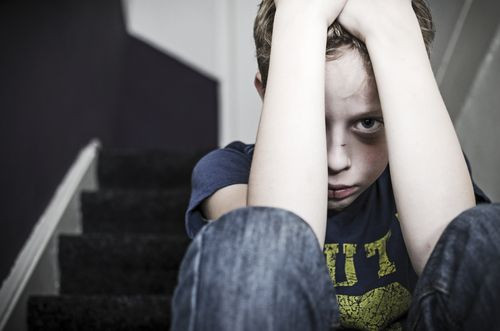Bullying: A Childhood Of Torture, A Lifetime Of Mental And Physical Health Issues

A mysterious bruise. A looped track of insults playing within. A fear of everyone — or of simply being.
Beginning the moment young girls learn where they rank in the hierarchy of prettiness and boys on the scale of brute strength, children quickly learn their “place.” They learn how to feel in this pigeonhole — terrified, perhaps. Powerful, if you’re one of the lucky ones. And as biology begins to work its magic, dotting faces with zits or endowing biceps with bulges, these kids learn equally fast that tossing another child around or firing verbal assaults makes them feel better. What they have yet to learn, however, is the damage they cause each time they do.
A Lifetime of Pain
Bullying, a growing body of evidence reveals, is just about the worst experience a child can endure. The effects are not temporary. They are long-lasting, visceral, and they are profound. And they emerge not only as emotional aversions but mental and physical maladies, too, which can decrease the bullied person’s quality of life and actually cut years from his or her lifespan.
"We need to move away from any perception that bullying is just an inevitable part of growing-up,” said Louise Arseneault, of the Institute of Psychiatry at King’s College London. Arseneault was the senior author of a recent long-term study that found children carried bullying’s effects for up to 40 years. Those who had been bullied both occasionally and frequently showed greater rates of suffering mental health disorders, suicidal thoughts, and increased risks for depression.
A separate study confirms this effect, and also adds to it the fact bullied children can suffer long-term physical health ailments. Interestingly, these include certain forms of chronic, systematic inflammation. Researchers from multiple American and British universities looked at data from the Great Smoky Mountains Study, which collected information on 1,420 individuals for more than 20 years.
"In this study, we asked whether childhood bullying can get 'under the skin' to affect physical health,” said lead author Dr. William E. Copeland, associate professor of psychiatry and behavioral sciences at Duke University School of Medicine, in a statement. Copeland and his colleagues collected blood samples from a random group of subjects to check for a low-grade inflammatory protein marker. The protein has been regularly used in prior research as a risk factor for metabolic syndrome and cardiovascular disease.
The team found participants who identified as former bullies had the lowest levels of the protein, while people who claimed to be victims of bullying had the highest. The findings indicated a mirroring effect to prior research showing childhood trauma puts kids on track for long-term affliction — in this case with inflammatory diseases. "Our study found that a child's role in bullying can serve as either a risk or a protective factor for low-grade inflammation," Copeland said. "Enhanced social status seems to have a biological advantage.”
Of course, as Copeland himself concedes, bullying isn’t the only way kids can attain social status. There’s much power to be gained in school from cooperation and friendship, as opposed to domination and fear-mongering. Without this switch in mindset, at stake could be the livelihoods of not only the bullied kids, but those who do the bullying.
"Large numbers of high school students report having been victimized by bullies and admit to carrying a weapon to school,” said Lana Schapiro in a recent news release. Schapiro is the lead author behind a new report that looked at how often victims of bullying bring weapons to school. Her team found that 20 percent of high school students reported being the victim of a bully, and of those 20 percent the risk of a child bringing a weapon to school increased with each risk factor the team described.
These include threats, fighting, sustaining injuries, and having their property damaged or stolen. Tragedies like the massacre at Columbine High School in 1999 are spurred on in large part, Schapiro argues, by the tormenting, relentless, insidious social forces that all but drive students to the breaking point. "With estimates of more than 200,000 victims of bullying carrying a weapon to high school, more effective prevention efforts and intervention strategies need to be identified,” Schapiro said, referencing 2011 figures released by the Centers for Disease Control and Prevention.
Ending It
Curbing these acts of intense mental and physical abuse begins with preventing their escalation. Adolescence is fraught with the follies of ignorance and the empty, unkind words that get tossed around at home and then parroted at school. This is also an argument many anti-bullying advocates invoke to talk about bullies as victims, too — as they often face abusive forces in their own home lives, which they project at school.
More and more, researchers are finding empathy is the salve that cools bullies’ hate. It’s what opens their eyes to the damage they inflict and what allows them to see the humanity in their victims — and the sheer beastliness in their own destruction. “[Forty] years is a long time,” Copeland said, “so there will no doubt be additional experiences during the course of these young people's lives which may either protect them against the effects of bullying, or make things worse. Our next step is to investigate what these are."



























